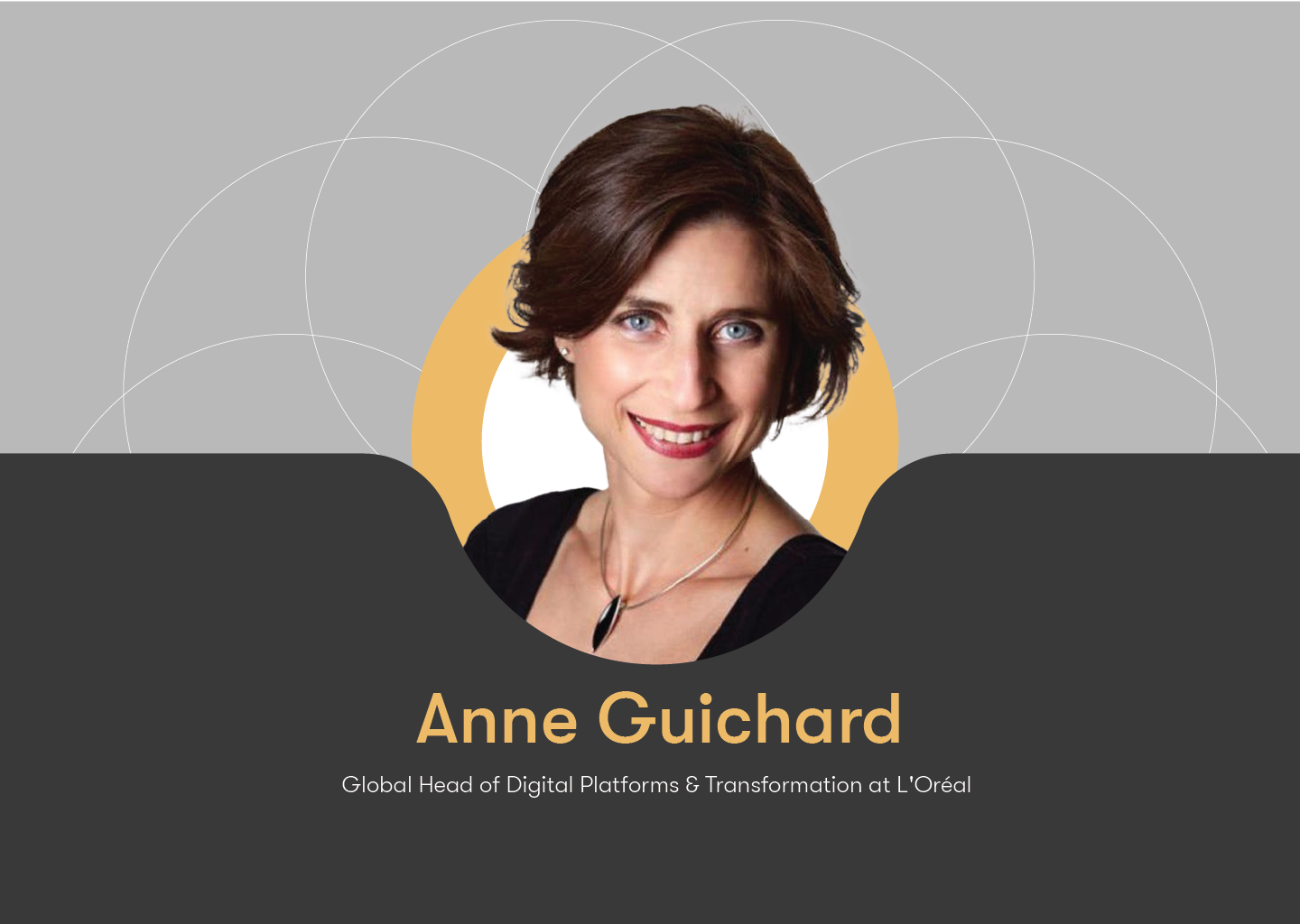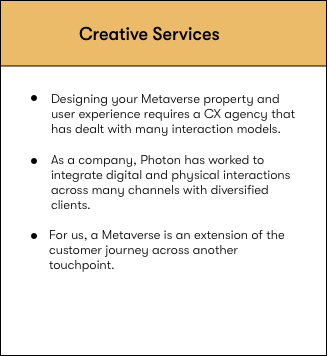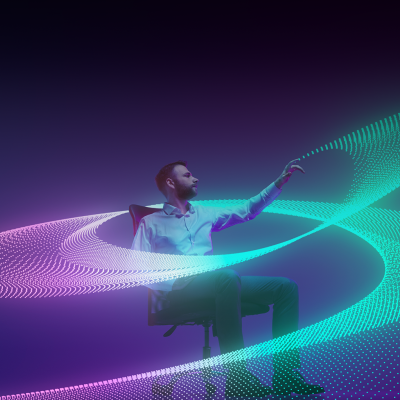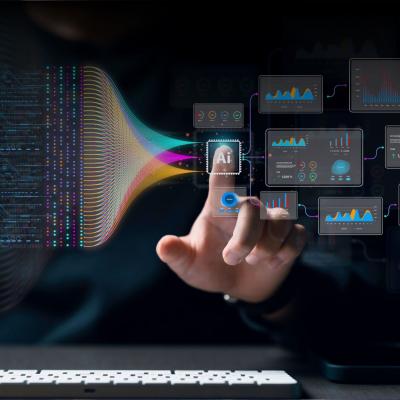In a world where digital transformation is a constant buzzword, the importance of non-digital elements often gets overlooked. To shed light on this critical balance, Deepak Sharma, Chief Client Strategy Officer at Photon, sat down with Anne Guichard, the Global Head of Digital Platforms & Transformation at L’Oréal, for an insightful podcast episode. Their conversation dives deep into the importance of human-centered approaches to digital initiatives, the necessity of balancing innovation with operational needs, and the invaluable lessons Anne has learned from her journey at L’Oréal.
Building a Digital Future: The Overlooked Non-Digital Blocks
A Conversation with Anne Guichard, Global Head of Digital Platforms & Transformation at L'Oréal
**To listen to the full episode, click the play button above.
Anne’s incredible 26+ years journey at L’Oréal has traversed marketing, general management, and now digital transformation. Her experiences at L’Oréal offer a unique perspective on what it truly means to lead a company through a digital revolution. Here’s a summarized version of the engaging Q&A discussion between Deepak and Anne.
Deepak: You’ve had an impressive journey at L’Oréal, almost like three different careers within one company. Could you tell us more about this unique experience?
Anne: Absolutely! I always say I’ve lived three lives at L’Oréal. My first life was in marketing, where I learned the foundational elements of beauty and brand management. Then, I transitioned to general management, overseeing operations in Switzerland and France, which was both rewarding and challenging. Finally, my third life is in digital transformation. I never imagined I’d be leading IT and digital at L’Oréal, especially since I had no technical background! But what I learned through this journey is that it's not about IT, it’s about management, building the right team, and organizing them effectively.
Deepak: What do you think was the most important factor in leading a successful digital transformation at L’Oréal, especially with the Website Factory project?
Anne: It boils down to non-digital skills. Yes, the Website Factory was a technical project, but its success was rooted in management, team motivation, and organization. I built a core team of experts in technology, project management, and finance. We worked closely with Photon, and it wasn’t easy. Initially, we faced a near-death experience as the factory wasn’t performing well. But after a year of hard work, we turned it around. The key was understanding what motivates different teams. Tech teams, for instance, aren’t motivated by the same things as marketing teams—they care deeply about innovation. So, we had to ensure they felt empowered to innovate, even while focusing on core deliveries.
Deepak: How did you approach the challenge of balancing autonomy and centralization across L’Oréal’s many brands while driving digital transformation?
Anne: That was one of the biggest challenges. L’Oréal has 37 brands, 15 of which were part of the Website Factory. Each brand had its own needs and identity, so the question was how to centralize the digital infrastructure while allowing these brands to maintain their uniqueness. The answer lay in co-building the processes with our partners, including Photon, and clearly defining roles and responsibilities. This allowed us to balance efficiency with brand autonomy.
Deepak: You mentioned that the concept of Minimum Viable Product (MVP) was initially misunderstood at L’Oréal. Can you share how you overcame that?
Anne: L’Oréal, especially in the luxury sector, is all about perfection from day one. So when we introduced the idea of MVP, it didn’t go over well. One executive even told me, “Never in my country will I launch something called ‘minimum.’” To adapt, we created something we called the “Max VP,” which was an MVP but with five extra features to make it more acceptable to the market. It was a small adjustment, but it made a huge difference in how the concept was received.
Deepak: Looking ahead, how do you see the role of AI in digital transformation, and what steps is L’Oréal taking to integrate AI responsibly?
Anne: AI is playing a huge role, especially with the rise of generative AI. We’re using AI to enhance our metadata processes in the Website Factory, among other areas. But we’re very mindful of the risks. L’Oréal has adopted seven principles for trustworthy AI, focusing on diversity, inclusion, and transparency. For instance, we decided that we will never use AI to generate images of faces or hair in our product ads—those will always be real people. It’s important to stay innovative, but also ethical, as AI continues to reshape the digital landscape.
Deepak: As someone who transitioned from marketing to digital transformation, what advice would you give to professionals hesitant to make the jump into digital roles?
Anne: My advice is simple: take the risk! Transitioning into digital was one of the best decisions I’ve ever made. It’s a field where you learn constantly, and the skills you gain are future-proof. When I first took on the digital role, I had no idea what terms like DevOps or Bitbucket meant. But I learned, and it’s been incredibly rewarding. The digital landscape is evolving so quickly—there’s no better time to jump in.
Deepak: On a lighter note, do you have a “digital moment” that stands out to you personally or professionally?
Anne: Yes, one moment that stands out was a meeting in Shanghai in 2018 or 2019. We were introduced to a new platform called Douyin, which is now known as TikTok. My boss immediately recognized its potential and said, “This will conquer the world.” Seeing how platforms like TikTok have evolved since then really cemented for me how powerful and transformative digital platforms can be.
We hope you enjoyed this insightful conversation with Anne Guichard on how non-digital essentials are the foundation of successful digital transformations. From leadership and team motivation to balancing innovation and operational needs, Anne’s experiences offer valuable lessons for anyone navigating the complexities of digital transformation.
To explore more engaging discussions with global digital leaders, visit Digital Strategy Unlocked.
About Digital Strategy Unlocked
Digital Strategy Unlocked is Photon’s podcast series that brings together top CIOs, CTOs, CMOs, and digital visionaries from leading global brands. Hosted by Deepak Sharma, Chief Client Strategy Officer at Photon, each episode dives into the latest trends in digital transformation, uncovering the real-world challenges and strategies behind building a successful digital future. Whether it's AI, digital platforms, or leadership in times of change, Digital Strategy Unlocked offers thought-provoking insights from those shaping the digital landscape. Be sure to tune in and discover how today’s leaders are unlocking the future of digital strategy.









